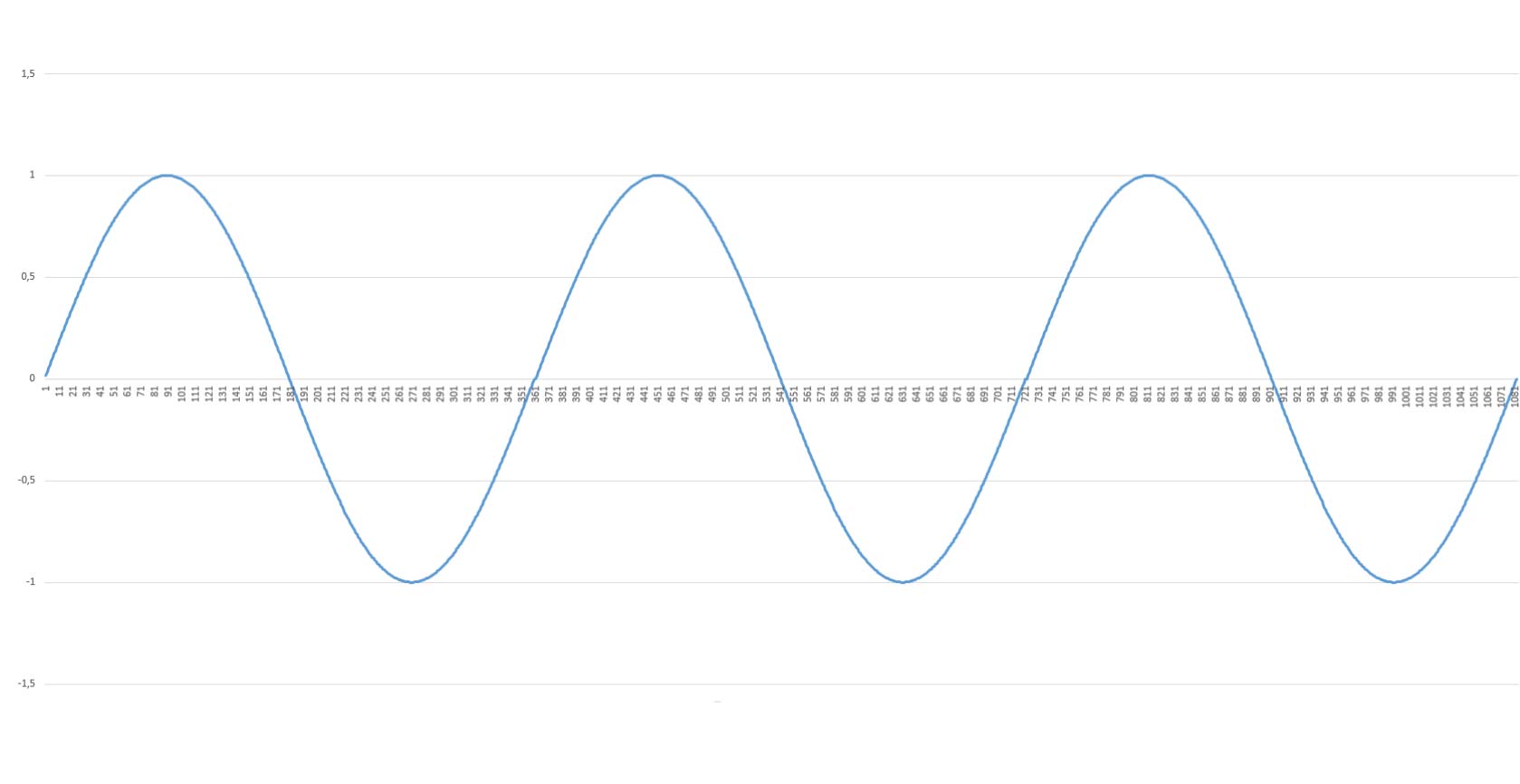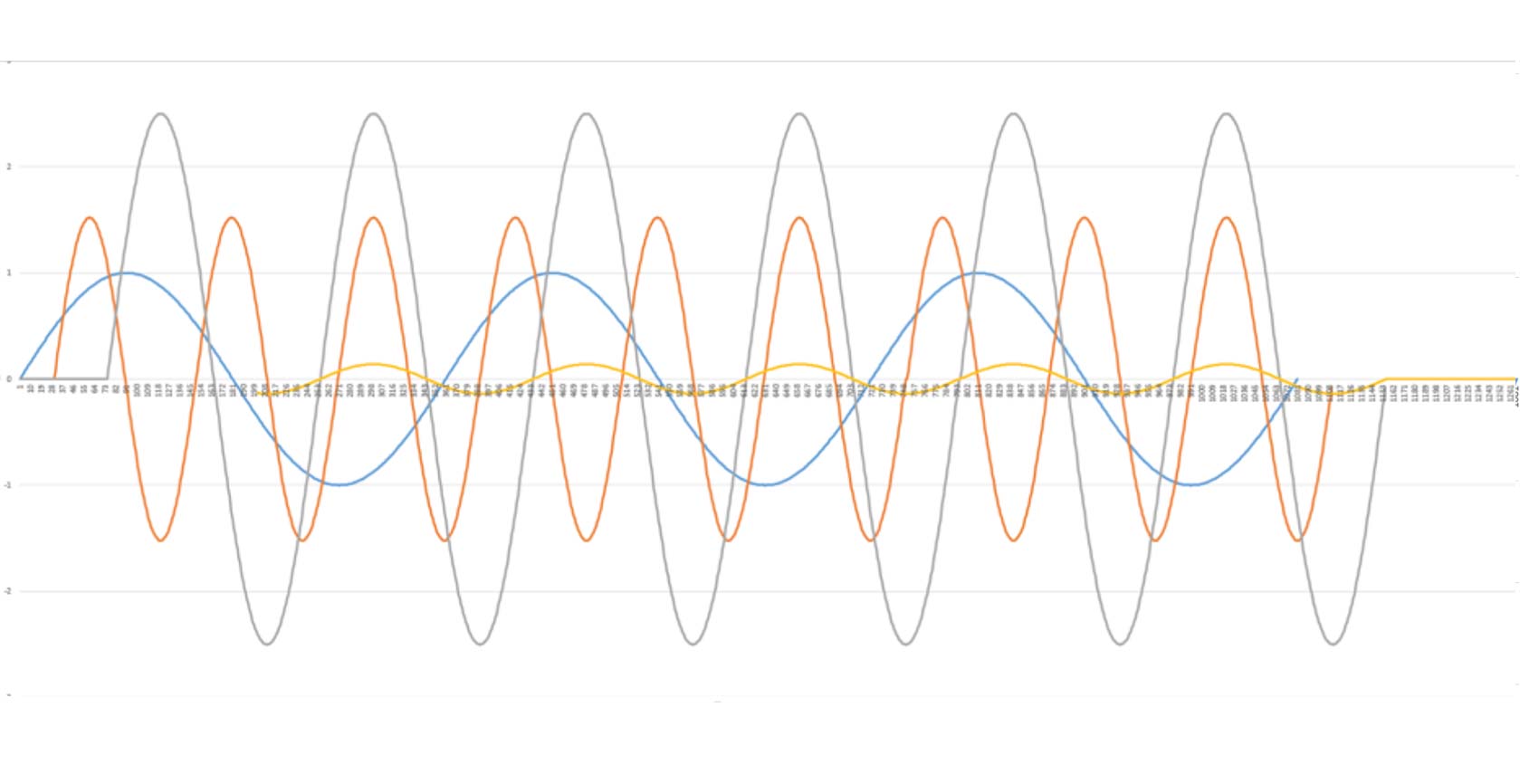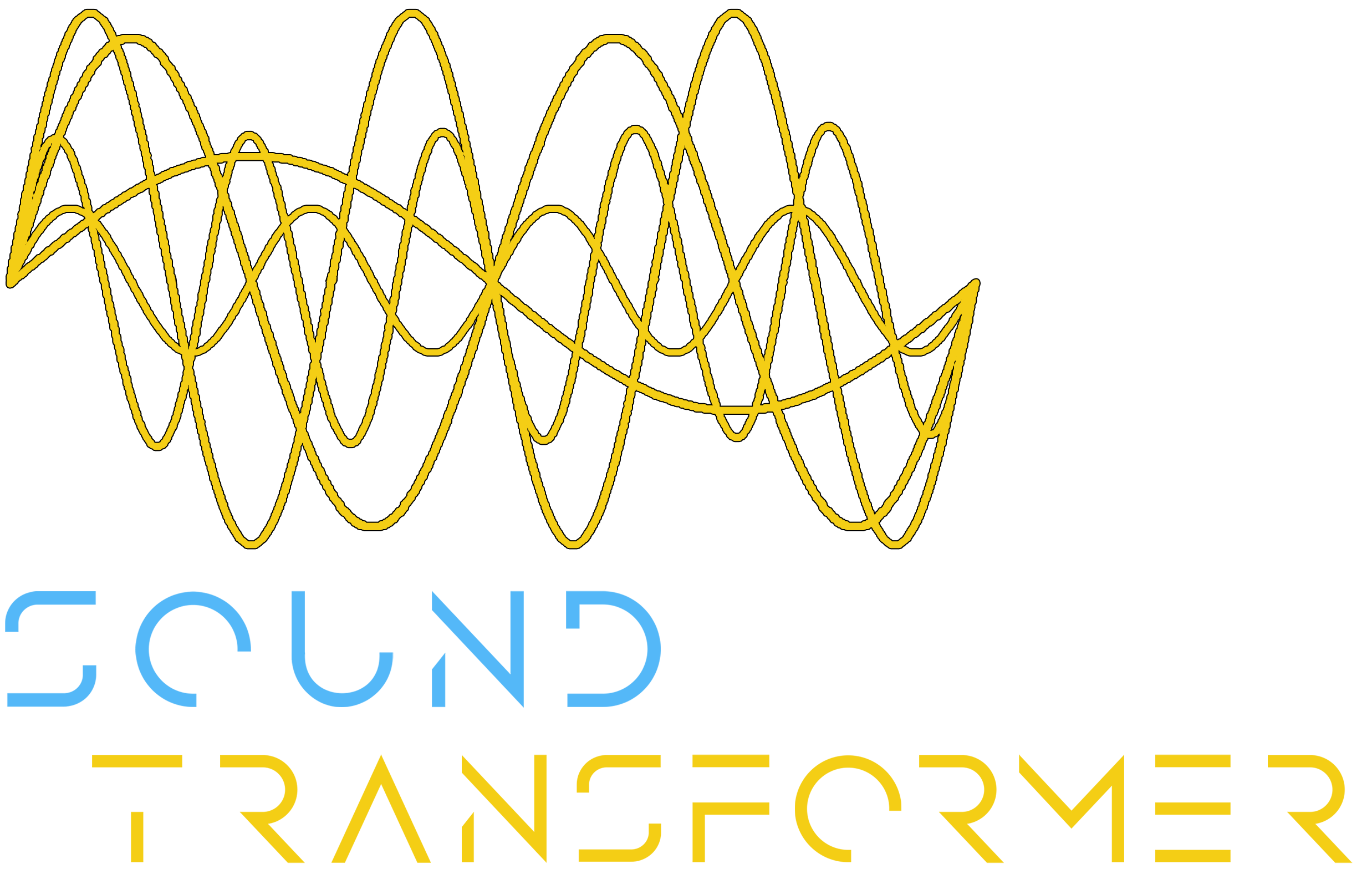
THE SCIENCE BEHIND
SOUND TRANSFORMER®
(Why this isn’t Snake Oil!…)

The discovery that served as the foundation of this invention was called Induction (Michael Faraday, 1835). Induction is the principle that alternating current creates alternating magnetic fields. These new magnetic fields then generate further electric signals. Depending on the attributes of the medium they are in, “phantom” overtones inevitably appear when audio is being transmitted through cables as an electromagnetic signal.
Enter AUDIO FUSION: the revolutionary technology that eliminates these phantom overtones, preserving the integrity of your signal.
AUDIO FUSION was discovered in the 21st century by Hungarian engineer György Làszlò.
To understand audio fusion, we have to cover some of the basics first.
Sound, in every case, is a result of mechanical movement within a medium. Sound cannot exist in a vacuum, as it requires interaction between an object and medium. Sound can only exist in matter, be it water, air, or solid materials.
The movement of an object creates vibrational waves in the medium. These vibrations, however, create further waves that are mathematically related to the original wave. This process goes on into infinity or until exhaustion, whichever comes first. These new waves are called overtones, or harmonics.
Most audio systems can not truly and faithfully handle these overtones. Most can barely play back a single sine wave, with its correlating harmonics and without misalignment and distortion. It is well known that no sound system exists today that could faithfully reproduce a full classical orchestra.
Because of the chaos created by transmitting an audio signal along a wire as an electromagnetic signal, most sound systems/speakers are limited to about 1% of efficiency and the possible sound quality is also limited to about 1% of its potential. The reason for this is interference.

This 400 Hz sine wave is our fundamental, the lowest tone that is generated as part of a complex signal. The peaks and dips of this signal repeat 400 times per second, creating the 400 Hz wave. If there are 800 of these waves in a second, then we get a sound that is an octave higher.
The perceived pitch of this tone is the same regardless of what instrument it comes from, be it a trumpet, guitar, voice, or piano. The perceived difference between all of these instruments is largely the result of the transient, which is the very first initial part of the signal, giving every sound source its unique identity. No transients are ever the same, therefore no sound source can ever be the same or sound the same. The transient is the unique fingerprint of everything that has the capacity to create sound.
Now let’s add overtones into the mix. The overtone structure is also unique to every instrument, and the quality of these overtones is what differentiates a beautiful sounding guitar from a bad sounding guitar. This is the same with a violin, singer, or any other instrument. The harmonics, or overtones, are the multiples of the fundamental. The harmonics of a 400 Hz sine wave therefore are 800 Hz, 1200 Hz, 1600 Hz, 2000 Hz and so on, into infinity.
The amount and quality of these overtones depends on the nature and quality of the sound source. A violin made out of high quality materials with impeccable craftsmanship will have a “prettier” overtone structure than a cheap violin. Legendary violins from Stradivari are known for exactly this beautiful and unique overtone structure.
Musicians call the overtones the soul of the sound, and an instrument or sound without appealing overtones will be called soulless.
Since most sound systems can not handle the high amount of overtones that exist in every sound, they get rid of these either electrically or mechanically. As we know, most speakers are restricted/limited to 20khz, thereby robbing the sound of crucial overtones. Sound, in essence, is being dumbed down to match the capabilities of most known speakers.
Many people like valve/tube amplifiers, because they filter out uneven harmonics thereby giving the speakers a cleaner, less complicated signal to work with.
Other Cables on the Market Today
As sound travels through a medium, the vibration of the sound waves generates further harmonics through induction, as described above. This means that in every case, additional sound is being generated just through the process of transmission.
These new harmonics, however, can never be truly in alignment with the original sound wave, as they require some initial movement from the original wave to generate new overtones. The 1st new harmonic, in return, generates a new harmonic as well, which will also be delayed.
In simplified ways, the result will look as follows:

Modern cables struggle handling these overtones and every cable sold today will cause delays between the fundamental and its overtone structure, as can be seen in the graph above.
The Problem With Delayed Overtones Through Transmission
This causes a number of issues:
1. It creates a distorted image of the sound. The full integrity of it is essentially lost.
2. Because the peaks and dips of the waves are not properly synchronized, there is essentially no “0” point, meaning no neutral resting position for your speaker, limiting its output and putting unnecessary strain on the system. Because of the lack of a 0 position, the speaker perceives the received signal as direct current and can never relax to its neutral position.
This direct current creates the visible movement of the speaker, which is not sound! It also limits the range of the speaker as the 0 position is shifted up, robbing the speaker of its possible range of movement in the opposite direction. This limits the output of the speaker as well as the range of frequencies it is capable of reproducing.
As an example, let’s take a simple speaker that has a range of movement from -6 to +6 around its natural resting position, 0. In an ideal scenario, the speaker will move equally around this resting position, creating sound waves in the air.
However, with the overtones distorting the fundamental and eliminating the 0 position as seen in the graph above, the resting position is shifted up (or down, depending on polarity) to +/- 2. This means that the speaker is always under strain and can not relax.
Furthermore, this means that if the speaker receives a signal that would demand it to go to its full +/-6 amplitude, it will be forced to go past its limits, to +/- 8, since the resting position has been shifted. The speaker will either choke this signal down, unable to reproduce it, or it will create an artificial non-existing, distorted phantom sound. In real life this would be as if people were never allowed to fully rest, being in a state of constant tension (like a guitar string that is constantly being pulled).
3. This is the most crucial: the delayed overtones distort the signal and double the number of peaks and valleys. Since the number of waves in a second determines the perceived pitch of the sound, this means that the fundamental tone becomes shifted up by an octave, essentially turning a 400 Hz sine wave into an apparent 800 Hz wave. Yes, you read that correctly.
With ordinary cables and ordinary speakers, you never hear clear fundamentals. Indeed, most people have never heard the true low end of their instruments once that instrument has been squeezed through ordinary recording mediums and devices. The lowest octave is simply lost.
This is the result of the signal mess in the previous picture. As you can see, the number of peaks and valleys has essentially doubled because of distortion, robbing the signal from its true fundamental. The lowest frequency has essentially been shifted up an octave.

Fusion
Core fusion is widely known to people, as this is how our sun generates the heat essential to human life. When two hydrogen atoms get close to each other, they repel each other due to a weak interaction between them, which becomes stronger as they are forced to get closer. (In reality this interaction is not weak at all, we just call it that).
If these two hydrogen atoms are forced to get close to each other past a certain threshold, a bond develops, such that it is essentially impossible to separate them again.
The fusion or split of two hydrogen atoms requires very specific circumstances, and in both cases a lot of energy gets released and new materials created. Usually we gain energy out of these processes exponentially higher than the energy required to start the process. (Fusion reactor, anyone?)
Enter Audio Fusion
So now let’s have a look at what sound engineering is. In sound engineering we take sound waves that were mechanically created by an object (instrument) in a medium (air) and convert them into electricity by using microphones, which use induction or capacitive differences to create electricity. Indeed, magnetic induction is how all of our microphones convert acoustic sound into electricity. As electronic signals pass along a wire an equal amount of photons appear. Electromagnetic waves actually consist of photons being emitted and then absorbed by electrons. (Some are “actual” and some are “Quantum”, by the way). These waves then generate further mechanical vibrations, which generate further photons, and this process goes on until exhaustion, bringing with it thousands of overtones.
The same applies to electronic instruments such as synthesizers, where the sound is electronically generated by oscillators. From the moment these signals are being transmitted in a cable to the succeeding piece of equipment, the cycle of overtone creation is started.
The electric signals created by microphones are usually 1-2mV strong, so they need to be amplified by preamplifiers to a level at which our succeeding gear can work with them. Usually the signal is amplified to 800-1230 mV.
In the next step we record/capture these electromagnetic waves that were created by the photons either in the analogue domain, such as on tape, or digitally via A/D conversion.
Further down the line we then take these signals and amplify them again to match the needs of PA systems, monitors, headphones or earbuds, again using amplified magnetic fields, or photons, to create mechanical movement in a membrane through induction.
Through AUDIO FUSION the sound waves that are even multiples of each other get aligned and grouped together, creating a stronger, more integrated sound.
Imagine sound traveling through ordinary cables like a cart being pushed up a hill, with some forces rocking it from the sides while others are pushing back from the opposite direction. With our technology we align all of these forces to work together to achieve their goal.
The AUFIO FUSION process makes the fundamentals and the overtones appear as one strong wave, increasing the signal strength by a factor of 10x -20x, which translates into a signal that is 3-6dB stronger. This resulting signal retains the same number of peaks and valleys as the original, as can be seen in the graph below.

55hz: a low note (low A on piano)
The Benefits
- The fundamental, for the first time in the existence of recorded sound, accurately dictates the pitch of the sound
- The overtones accurately represent the quality of the sound
- The transients accurately describe the nature of the sound
- This resulting signal is the first of its kind and will make an instant difference in recordings and playback
- With monitors one will notice an instant volume increase of the system, as well as clear transients, accurate width, overtones and spaces
- An added benefit is the accurate and faster step response of the monitoring which, together with the achievement of a neutral resting position, results in the speakers being less sensitive to acoustic circumstances
To quote Morpheus from The Matrix,
“The only thing (we) can offer is the truth”… for the first time in audio engineering.
